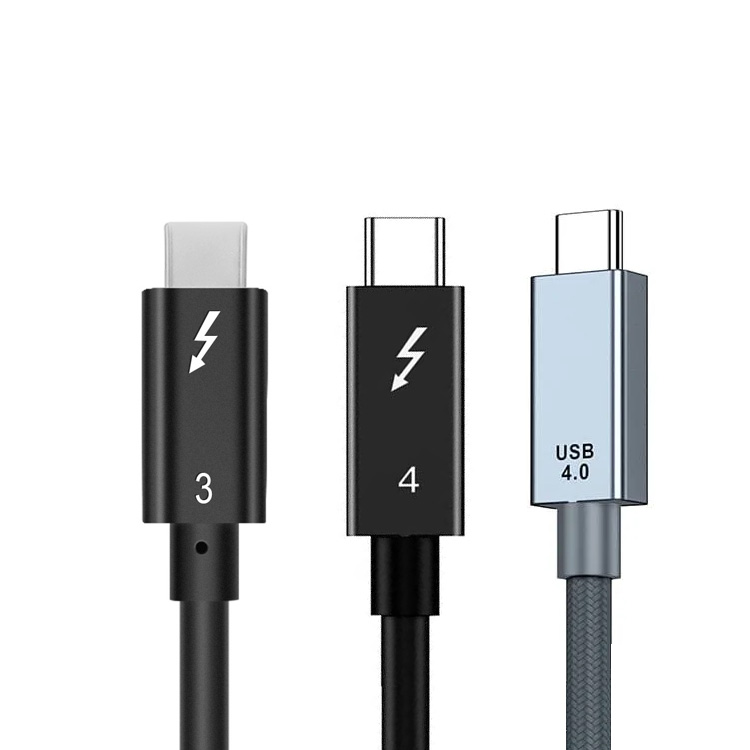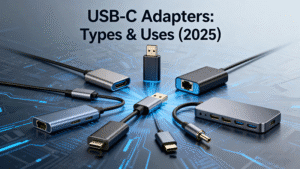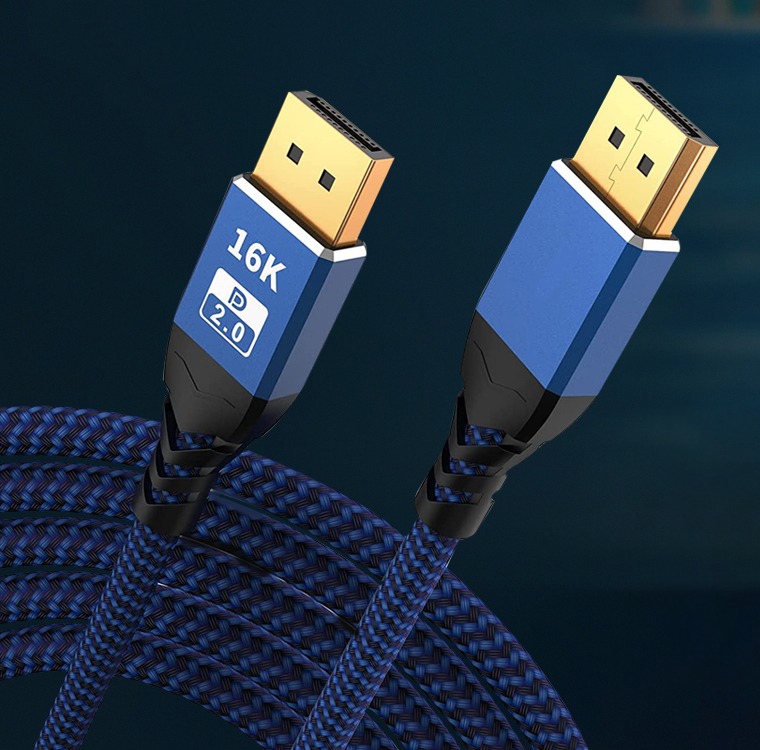Introduction
As technology continues to develop, our electronic devices are also constantly being updated and upgraded. Among the different interface standards, Thunderbolt 3, Thunderbolt 4, and USB4 are three widely discussed and used standards. Although they are somewhat similar in name, they actually have obvious technical and performance differences.
The importance of high-speed and reliable data transfer for gamers
High-speed and reliable data transfer is crucial for gamers because it directly impacts their gaming experience.
It provide faster data transfer speeds for modern games. High-speed data transfer ensures that gamers can load games and levels quickly, resulting in a smoother and more immersive gaming experience. In addition, reliable data transfer is important to prevent lag, buffering, and interruptions during gameplay.
Stable and fast internet is crucial for online gaming, helping reduce lag and enabling quick responses. Additionally, commonly employed to connect gaming peripherals like controllers, keyboards, and mice to gaming devices.
High-speed and reliable data transfer is necessary for these peripherals to function optimally and provide a seamless gaming experience. Overall, the importance of high-speed and reliable data transfer for gamers cannot be overstated. Play a crucial role in meeting these needs, ultimately enhancing the overall gaming experience for gamers.
Comparison of Parameters
| Spec | Thunderbolt 3 | Thunderbolt 4 | USB4 |
| Release Year | 2015 | 2020 | 2019 |
| Max Transfer Rate | 40Gbps | 40Gbps | 80Gbps, 40Gbps, 20Gbps, 10Gbps, and 5Gbps |
| Max Power Delivery | 100W | Required up to 140W Available up to 240W
| 240W |
| PCIe Protocol Supported | 4 PCIe 3.0 lanes | 4 PCIe 3.0 lanes | 2 lanes |
| Display Support | 2x 4K or 1x 8K at 60Hz | Up to 2x 4K at 60Hz or 1x 8K | Up to 2x 4K at 120Hz |
| Cable Length | 0.5m Passive 2m Active | 8K@30Hz up to 2m Passive | Up to 2m Passive |
| Wake from Sleep for Peripherals | Not Mandated | Mandated | Not Mandated |
| Compatibility | Thunderbolt 1/2 devices | Thunderbolt 1-3 devices | Thunderbolt 3 & USB 3.2 devices |
Are Thunderbolt 3, Thunderbolt 4, and USB4 Versions Compatible with Each Other?
Thunderbolt 3, Thunderbolt 4, and USB4 versions are compatible with each other. Both Thunderbolt 4 and USB4 are based on the Thunderbolt protocol, and devices that support any of these versions should be able to work with each other. However, the compatibility may vary depending on the specific devices and their capabilities.
Advantages and Disadvantages of Thunderbolt 3

Introduction
Thunderbolt 3 is a high-speed data transmission standard introduced by Intel and was first released in 2015. It is an interface technology that can realize data, video and power transmission, with high bandwidth and transmission speed.
Advantages
- Faster Data Transfer Speeds: Thunderbolt 3 technology offers data transfer speeds of up to 40Gbps, which is twice as fast as Thunderbolt 2 and four times faster than USB 3.1.
- High Quality Video and Audio: Thunderbolt 3 supports high-resolution displays and can handle multiple 4K displays at once. It also supports high-quality audio and reduces latency for improved sound quality.
- Power Delivery: Thunderbolt 3 can deliver up to 100W of power, allowing users to charge their laptops and devices through a single cable. This eliminates the need for multiple power adapters.
- Versatile Connectivity: Thunderbolt 3 uses a USB-C connector, which means it is compatible with a wide range of devices and peripherals. It can also support various protocols, such as USB, DisplayPort, and PCI Express.
- Daisy Chaining: Thunderbolt 3 allows users to connect multiple devices in a daisy chain configuration. This means that users can connect multiple devices to a single Thunderbolt 3 port without sacrificing performance.
Disadvantages
- Limited compatibility: Thunderbolt 3 ports are not as common as other types of ports like USB, HDMI, or DisplayPort. This can limit the devices and peripherals you can connect to your computer.
- Expensive cables and accessories: Thunderbolt 3 cables and accessories are more expensive than other types of cables and accessories. This can add to the overall cost of using Thunderbolt 3 technology.
- Power limitations: Thunderbolt 3 has a power delivery limit of 100W, which may not be sufficient for charging some high-power devices.
- Limited distance: Thunderbolt 3 cables have a maximum length of 2 meters, which can limit the placement of devices and peripherals connected to the port.
- Potential for overheating: Thunderbolt 3 devices can generate a significant amount of heat, which can lead to overheating issues if not properly managed.
- Limited availability on some devices: While Thunderbolt 3 is becoming more common, it may still not be available on all devices, especially older models. This can limit the use of Thunderbolt 3 technology.
Scope of Application
- Data transfer: Supports data transfer rates up to 40 Gbps, suitable for external hard drives, storage devices, and fast data migration.
- Video output: Can connect multiple 4K monitors or one 5K monitor, with wide applications in video editing, design, and other fields.
- Charging function: Supports USB-C charging, allowing users to power devices through the same port, with a maximum power of up to 100W.
- Docking station: The Thunderbolt 3 interface can connect to a docking station, providing more port functions such as HDMI, USB-A, Ethernet, etc., to enhance device connectivity.
- External graphics card: Especially in games and graphics-intensive tasks, Thunderbolt 3 can be used to connect an external graphics card to a laptop to improve graphics processing capabilities.
- Audio device: Supports high-quality audio transmission, suitable for professional audio devices and audio interfaces.
Advantages and Disadvantages of Thunderbolt 4
Introduction
Thunderbolt 4 is the latest generation of high-speed data transfer technology developed by Intel. It offers faster speeds, improved performance, and enhanced connectivity compared to its predecessors. Thunderbolt 4 is capable of transferring data at speeds of up to 40 Gbps, supporting multiple 4K displays, and delivering up to 100W of power delivery. It also includes support for USB4 and is compatible with various devices and peripherals, making it a versatile and powerful solution for modern computing needs.
Advantages
- High-speed data transfer: Supports transfer speeds of up to 40 Gbps, capable of quickly transferring large amounts of data.
- Compatibility: Backwards compatible with Thunderbolt 3 and USB-C devices, simplifying connectivity.
- Multi-device connection: Supports connection of up to two 4K monitors or one 8K monitor, suitable for professional graphics work.
- Charging capability: Provides up to 100W charging capability for devices for easy use.
- Security: Built-in stronger security protocols such as DMA protection to enhance data security.
- Simple connection interface: Use USB-C interface to reduce cable clutter and connection issues.
Disadvantages
- High Price: Thunderbolt 4 devices and cables are generally more expensive than other interfaces (such as USB-C).
- Compatibility Issues: Although Thunderbolt 4 is backward compatible, not all USB-C ports support Thunderbolt 4 features, which may prevent some devices from taking full advantage of its benefits.
- Unpopularity: Although Thunderbolt 4 offers high bandwidth and versatility, it is still not as popular as USB interfaces, resulting in a small number of devices developed to support Thunderbolt 4.
- Heat and Power Consumption: Under high load, Thunderbolt 4 devices may generate high heat and power consumption, which may not be suitable for some environments or devices.
- Cable Limitations: Although Thunderbolt 4 supports longer cable transmission, for optimal performance, it is still necessary to use a high-quality cable designed specifically for Thunderbolt.
Scope of Application
- Data Transfer: Thunderbolt 4 supports data transfer rates of up to 40Gbps, suitable for environments that require fast data exchange, such as professional video editing, large file transfer, etc.
- Display Output: The standard supports simultaneous connection of multiple high-resolution displays (up to 8K), suitable for use in fields such as design, engineering and multimedia production.
- External Device Connection: Thunderbolt 4 can connect to a variety of external devices, including hard drives, docks, audio interfaces and printers, providing efficient expandability.
- Charging and Power Supply: Provides up to 100W of power supply, which is convenient for charging devices such as laptops, enhancing portability and flexibility of use.
- Chain Connection: Supports connection of up to 6 devices, suitable for office and workstation environments.
- Compatibility: Backward compatible with Thunderbolt 3 and USB-C devices, easy to integrate with existing hardware.
Advantages and Disadvantages of USB4
Introduction
Thunderbolt 4 is the latest generation of high-speed data transfer technology developed by Intel. It offers faster speeds, improved performance, and enhanced connectivity compared to its predecessors. Thunderbolt 4 is capable of transferring data at speeds of up to 40 Gbps, supporting multiple 4K displays, and delivering up to 100W of power delivery. It also includes support for USB4 and is compatible with various devices and peripherals, making it a versatile and powerful solution for modern computing needs.
Advantages
- Increased data transfer speeds: USB4 has a maximum data transfer rate of 40 Gbps, making it much faster than previous USB versions.
- Improved compatibility: USB4 is designed to work with existing USB-C devices and cables, making it easier to connect and use different devices together.
- Enhanced power delivery: USB4 supports up to 100 watts of power delivery, allowing for faster charging of devices.
- Multi-lane operation: USB4 uses multiple data lanes to improve overall data transfer speeds and performance.
- Dual-role USB operation: USB4 devices can function as both a host and a peripheral, allowing for more flexibility in device connections.
Disadvantages
The scope of application of USB4S (USB4 Specification) refers to the application and implementation of USB4 technology, including communication and data transmission between USB4 devices. The specification covers the requirements and requirements of USB4 connectors, cables, electrical signal transmission, data transmission protocols, etc. The USB4S specification is designed to ensure interoperability and compatibility between different USB4 devices to provide a stable and efficient data transmission experience.
Conclusion
Thunderbolt 3, Thunderbolt 4, and USB4 are high-speed data transmission standards with varying performance and applications. When choosing an interface, consider your needs and budget. If you need higher performance and functions, you can choose Thunderbolt 4; if you need wider compatibility and versatility, you can choose USB4. In daily use, a reasonable choice of interface standards can improve work efficiency and device usage experience.
FAQ
Can Thunderbolt 3 devices work with Thunderbolt 4?
Yes, Thunderbolt 3 devices are compatible with Thunderbolt 4 ports. However, some functionalities may be limited depending on the device’s specifications.
Can USB4 devices work with Thunderbolt 4 ports?
Yes, USB4 devices can work with Thunderbolt 4 ports, benefiting from the high-speed capabilities.
What about Thunderbolt 4 and USB4 compatibility?
Thunderbolt 4 ports are essentially USB4 ports with enhanced features. They will support all USB4 devices and protocols.









